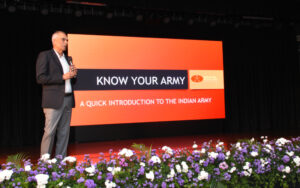Teaching methods and curricula have drastically changed from ancient to modern times. The educational system was more straightforward in ancient times, and teaching relied mainly on hands-on experience. Students used to sit on the floor to listen to lectures. In contrast, the style of education has improved over the years. Use of advanced technologies like smart boards or PPTs has become more prominent, which has enhanced the overall learning experience. This blog digs deeper into the innovations in education, benefits, and a few challenges of modern teaching methods.
Understanding Modern Teaching Methods
To keep up with the changing world, teaching has also evolved. New methods of teaching have been explored that are dynamic, relevant, encourage critical thinking, and promote skill and personal development. This not only helps in academics but also is beneficial in forming an individual personality. Innovative tools and strategies are designed to impart knowledge, boost retention skills, and improve understanding of the concepts. For teachers, these tools reduce stress and workload. It helps them simplify and explain the topics in an easy way. This makes learning more engaging and interactive, enriching the classroom experience.
Key Innovations in Education
Let us now look at some of the innovative techniques that have transformed the way education is delivered:
- Use of Technology in Classrooms
Technology has been integrated into the classrooms to engage children. Digital tools like:
- Smartboards: For pictorial representations, to explain with the help of videos and infographics
- Tablets: Provide personalized learning
- Educational apps: To access classroom materials, listen to the recorded classes
Thus, with the use of technology in classrooms, teachers can deliver lessons that align with the strengths and needs of children. The digital tools excite children and motivate them to pay attention and learn new things.
- Personalized Learning
- AI tools can be used to assess the performance of the students and help teachers give personalized feedback.
- Students can track their progress and improve upon themselves.
- Using modern apps like Zoom or Google Meet, students can collaborate with other students to resolve doubts or conduct combined studies..
- Students can either watch videos, listen to podcasts, or read articles based on their interests for a better understanding of the subject.
- Online platforms allow students to learn at their own pace and encourage self-directed learning.
- Blended Learning
- This approach combines traditional classroom teaching with online learning platforms.
- Students physically attend classes and participate in discussions and project work. Alongside this, they are also taught using videos, infographics, PPTs, etc. inside the classroom.
- This approach offers the advantages of both traditional and online learning. Students can ask teachers questions directly and engage with their peers, while online platforms ensure that students remain connected, provide easy access to resources, and allow for personalized learning experiences..
Student-Centered Learning Approaches
The modern methods of teaching are mainly focused on student engagement and active learning. A few student-centric approaches are briefed below:
- Flipped Classrooms
This is the most popular student-learning approach in modern education. As per traditional practice, it is the teacher who first introduces and explains a new concept in the classroom. Students then go back home, revise, and look into the concept again. In contrast to the traditional approach, the flipped classroom method encourages students to learn the new concepts beforehand, on their own. It motivates students to come prepared before the topic is taught by the teacher. They can later clarify the doubts with the teacher in the classroom. This method allows students to think independently and understand the subject by themselves. It promotes creativity, critical thinking, and comprehension skills by allowing students to take an active part in the learning process.
- Project-Based Learning
This is one of the most effective and interactive ways to impart education. In this method, students work on projects either individually or in groups. They are supposed to research the topic, use their creativity to design, and collaborate with team members. In the due process of making a project, students tend to learn things and find solutions on their own. It gives students hands-on experience on the subject matter and improves their knowledge. Students learn to think critically and solve problems. It encourages teamwork and motivates students to learn more.
- Gamification in Education
This is an interesting and fun technique to keep students engaged in the classroom. As the name suggests, games are used as a method of teaching. To make it more enjoyable and competitive, scores and rewards are given to students. It improves retention and develops a love for learning. Incorporating activities like debates, group discussions, Pictionary, puzzles, and quizzes improves memory, logical reasoning, and creative thinking. Game-based learning boosts classroom engagement and makes learning truly inclusive.
Also read: Everything You Need to Know About Student-Teacher Ratios
Benefits of Modern Teaching Methods
Modern teaching methods have a great deal of perks, namely:
- Improves engagement, focus, and motivation.
- Encourages critical thinking.
- Prepares students for the future.
- Helps students retain information better.
- Provides personalized learning experience.
- Enhances the performance of students.
- Digital tools facilitate a better understanding of the concepts.
- Increases access to resources.
- Provides flexibility in learning.
- Improves social skills like communication, teamwork, adaptability, etc.
Challenges in Implementing Modern Teaching Methods
There are a few hurdles in implementing modern teaching methods, such as:
- High installation costs: Installing new technology can be expensive.
- Lack of trained teachers: The majority of the teachers are not skilled enough to handle new technologies.
- Inadequate infrastructure, like a lack of stable internet connection, can hinder the learning process.
- Resource crunch, like small classrooms or limited funds for unaided schools.
- Adopting new methods can be time-consuming for teachers. They have to put in the learning process, and students may get distracted..
Conclusion
Modern classroom methods have revolutionized the education system. These techniques have proven enriching, interactive, and fun, creating interest among students in learning. Schools must adopt more such methods to motivate their students to participate in learning actively. More such innovations must be encouraged to overcome drawbacks and achieve the benefits of modern educational methods in every school in India.
Frequently Asked Questions (FAQs)
Modern teaching methods improve memory, develop critical thinking skills, increase classroom engagement, promote interest in learning, and help form social skills like teamwork and communication.
Advanced technological tools like smart boards and tablets provide a personalized learning experience. Blended learning improves the interaction between students with teachers and peers. It gives an opportunity for the students to learn at their own pace.
The flipped classroom method is an alternate way of learning wherein students are asked to first learn about the concept by themselves without completely relying on the teacher. This encourages independent and critical thinking among students.
Teachers have to be flexible to adapt to new teaching methods. They can take the help of other skilled teachers to integrate technology into teaching. Schools should provide training to the teachers.



